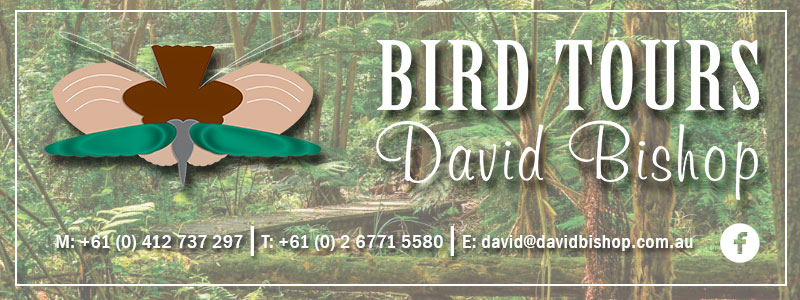| I have been monitoring the birds including honeyeaters for ten years on our wooded property just outside Armidale, NSW and have yet to discern any clear pattern with regards to honeyeaters that we record. Mind you have yet to analyse my data so my comments are purely subjective. We have no records of Little Wattlebird but have resident Red Wattlebirds and at the moment in good numbers including flocks of ca. 6-10. White-eared Honeyeaters have appeared recently for the first time in a year but prior to that they were regular in small numbers. Two colonies of Fuscous are here year round along with a flock of eight Brown-headed and several White-naped. Scarlet Honeyeaters appear occasionally and very occasionally in large numbers (10-30) when the Angophoras and other native shrubs are flowering. Other honeyeaters that we see regularly here include: Noisy Friarbird, Yellow-faced - sometimes in good number suggesting they are perhaps on migration; rarely White-plumed and occasionally Noisy Miners when they make forays from nearby wooded farmland. At least one pair of Eastern Spinebills are resident around the house.
David Bishop, Armidale.

P. O. Box 1234, Armidale, NSW 2350, Australia
On 17 Jul 2020, at 17:22, Penny Brockman <> wrote:
There has been a noticeable lack of
medium size honeyeaters in the Gloucester area ever since we were
shrouded in smoke during the bush fires.
The oddity in my garden, however, is a
Little Wattlebird. First time I've seen one here. It's taken up
residence (2 weeks ago) perching in the almost bare mulberry and
croaking in hope of getting a reply. Rest of its daily activity is
feeding in a banksia spinulosa and a heavily flowering grevillea
with the occasional bath. The Red Wattlebird sees it off sharply
from time to time.
I think most of our smaller honeyeaters
went to the coast during that horrible time and haven't returned.
Penny in Gloucester
On 17/07/2020 5:05 PM, Kim Sterelny
wrote:
Hi Folks: two queries
1. Today at my place near Central Tilba, NSW far south coast, I saw for the first time white-eared honeyeaters (at least two). The distribution maps do not exclude them, but I thought they were more inland, dry country birds. Possible that fires and drought have pushed them east, and they are still here? Others more expert (almost everyone) will probably know whether this sighting is genuinely unusual
2. For the last couple of months, I am getting dozens, if not more, of white napped honeyeaters coming into drink at my various watering stations. I have always had a few, but lately they have been the most common bird on the property, by quite a way. Has anyone else noted a spike in their numbers?
Hope you are all doing OK in these weird times
Kim
Kim Sterelny, School of Philosophy, Research School of the Social Sciences, Australian National University, Acton, 0200, ACT, Australia
m("anu.edu.au","Kim.Sterelny");"> or m("vuw.ac.nz","Kim.Sterelny");">
61-(0)2-6125-2886
<HR>
<BR> Birding-Aus mailing list
<BR> m("birding-aus.org","Birding-Aus");">
<BR> To change settings or unsubscribe visit:
<BR> http://birding-aus.org/mailman/listinfo/birding-aus_birding-aus.org
</HR>
<HR> <BR> Birding-Aus mailing list <BR> <BR> To change settings or unsubscribe visit: <BR> http://birding-aus.org/mailman/listinfo/birding-aus_birding-aus.org</HR>
|
<HR>
<BR> Birding-Aus mailing list
<BR>
<BR> To change settings or unsubscribe visit:
<BR> http://birding-aus.org/mailman/listinfo/birding-aus_birding-aus.org
</HR>
|

